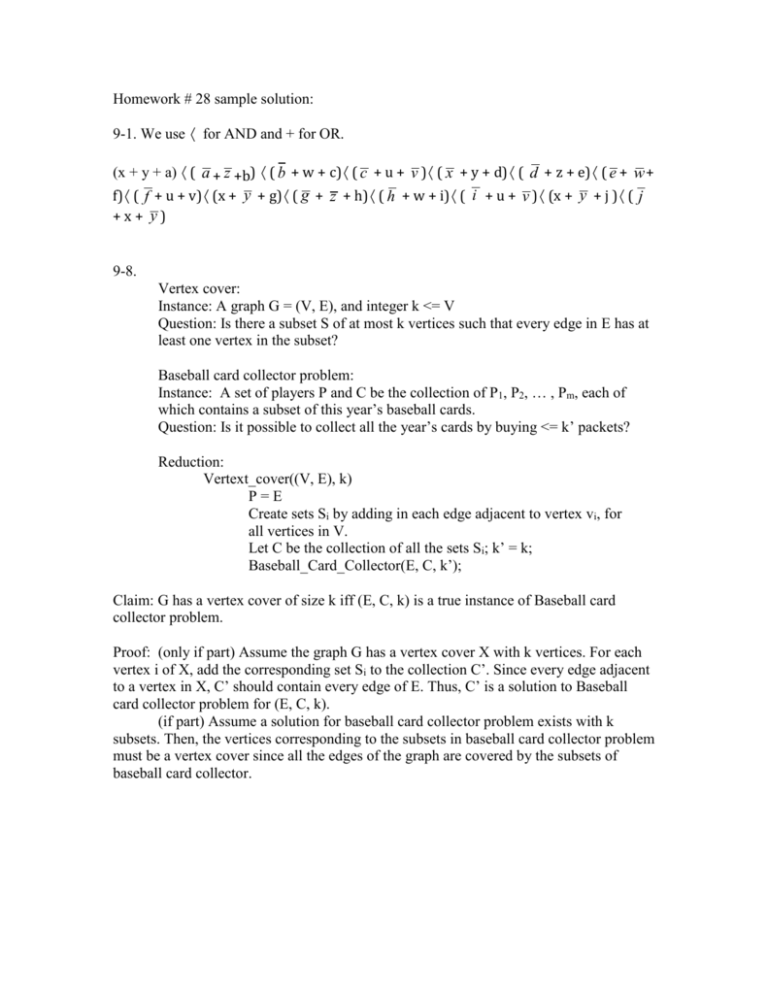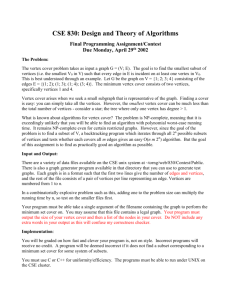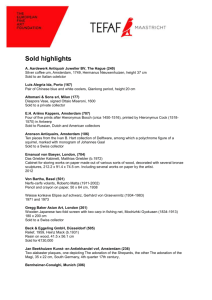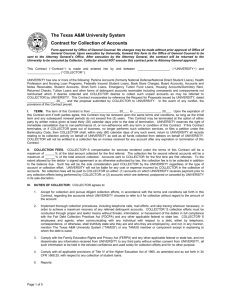Homework # 28 sample solution: 9-1. We use for AND and + for OR
advertisement

Homework # 28 sample solution: 9-1. We use · for AND and + for OR. (x + y + a) · ( a + z +b) · ( b + w + c) · ( c + u + v ) · ( x + y + d) · ( d + z + e) · ( e + w + f) · ( f + u + v) · (x + y + g) · ( g + z + h) · ( h + w + i) · ( i + u + v ) · (x + y + j ) · ( j +x+ y) 9-8. Vertex cover: Instance: A graph G = (V, E), and integer k <= V Question: Is there a subset S of at most k vertices such that every edge in E has at least one vertex in the subset? Baseball card collector problem: Instance: A set of players P and C be the collection of P1, P2, … , Pm, each of which contains a subset of this year’s baseball cards. Question: Is it possible to collect all the year’s cards by buying <= k’ packets? Reduction: Vertext_cover((V, E), k) P=E Create sets Si by adding in each edge adjacent to vertex vi, for all vertices in V. Let C be the collection of all the sets Si; k’ = k; Baseball_Card_Collector(E, C, k’); Claim: G has a vertex cover of size k iff (E, C, k) is a true instance of Baseball card collector problem. Proof: (only if part) Assume the graph G has a vertex cover X with k vertices. For each vertex i of X, add the corresponding set Si to the collection C’. Since every edge adjacent to a vertex in X, C’ should contain every edge of E. Thus, C’ is a solution to Baseball card collector problem for (E, C, k). (if part) Assume a solution for baseball card collector problem exists with k subsets. Then, the vertices corresponding to the subsets in baseball card collector problem must be a vertex cover since all the edges of the graph are covered by the subsets of baseball card collector.











